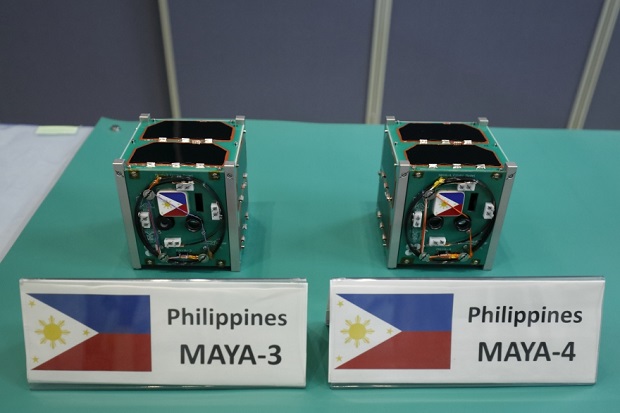Ten months after their deployment into orbit, Filipino cube satellites (CubeSats) Maya-3 and Maya-4 re-entered the Earth’s atmosphere on 04 August 2022 at 10:01 pm, and 08 August 2022 at 4:09 pm, respectively, ending their mission.

Maya-3 and Maya-4 were the first Filipino CubeSats built in a local university setting, designed and developed by the first batch of scholars under the Space Space Science and Technology Proliferation through University Partnerships (STeP-UP) project of the STAMINA4Space Program.
“Maya-3 and Maya-4 were pivotal in the development of the local space industry. These CubeSats are experimental and educational platforms, and while all low earth orbiting satellites will eventually fall to earth, what matters more are the lasting intangibles that the project brought – knowledge, skill, partnerships, and confidence that we can do it,” said Dr. Maricor Soriano, program leader of STAMINA4Space Program.
Maya-3 and Maya-4’s bus systems are fashioned after Maya-1’s bus heritage, with enhancements in the antenna board. One of the missions of both satellites is to carry a commercial off-the-shelf APRS-Digipeater Payload Demonstration (APRS-DP mission), which uses packet radio technology to transmit information over amateur radio. The CubeSats are identical except for a near-infrared camera mounted on Maya-4, which made the only difference in their missions.

Photo courtesy of JAXA/NASA
Both CubeSats were able to transmit APRS beacons to ten countries on different occasions. Different amateur radio operators from 8 countries were also successful in digipeating through the satellites.
“Maya-3 and Maya-4 showed that the country is capable of building satellites locally. We have successfully transferred the knowledge and know-how acquired abroad by virtue of foreign studies and proliferated those lessons locally,” said Renzo S. Wee, one of the engineers who developed the satellites.
Wee was joined by Gladys Bajaro, Judiel Reyes, Derick Canceran, Marielle Magbanua-Gregorio, Lorilyn Daquioag, Bryan Custodio, and Christy Raterta in the development of the satellites.
The CubeSats were launched to the International Space Station (ISS) on August 29, 2021, aboard the SpaceX Falcon 9 rocket’s Dragon C208. On October 6, 2021, the CubeSats were deployed into orbit via Kibo Laboratory Module, along with Binar-1, developed by Curtin University in Australia.
The next day on October 7, beacons from the CubeSats were immediately received and decoded during their 9:00 AM PST pass remotely through the Philippine Universities Ground Archiving and Data Reception (PUGAD) station in UP Diliman.
Maya-3 and Maya-4 were built under the STeP-UP project of the STAMINA4Space Program, which is funded by the Department of Science and Technology (DOST) and is implemented by the University of the Philippines Diliman (UPD) and the DOST Advanced Science and Technology Institute (DOST-ASTI).
The nanosatellite development track under the Master of Science (MS) or Master of Engineering (MEng) program of the Electrical and Electronics Engineering Institute of the University of the Philippines Diliman (UPD-EEEI) is also implemented in collaboration with the Kyushu Institute of Technology (Kyutech) in Japan and with scholarship support from the Department of Science and Technology’s Science Education Institute (DOST-SEI).




